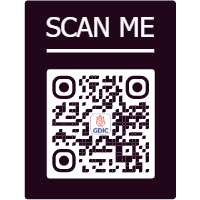A liver ultrasound is a crucial diagnostic tool used to assess liver health. Doctors recommend it to diagnose various conditions, including liver cancer, cirrhosis, and hepatitis.
An ultrasound scan, a best imaging technique used at the best imaging centre is a method of imaging using sound waves, to scan the working of the body organs. It is also referred to as USG or Sonography.
A liver ultrasound scan is a radiology procedure that falls under nuclear medicine. The test is utilized to detect certain liver conditions or to evaluate liver function. It is also utilized to monitor the treatment of certain conditions. It is also referred to as a liver-spleen scan because the spleen is also scanned due to its close functional association with the liver.
Typically, the question is, why is a liver ultrasound recommended by doctors, what is the procedure and preparation, and what are the risk factors as well as benefits? So, in this blog, we will clarify every question that comes into your mind when the doctor refers you for Liver Ultrasound.
Why should a doctor refer to Liver Ultrasound?
There are several reasons for your doctor to refer you for a liver ultrasound.
- To diagnose the diseases such as Liver Cancer, Cirrhosis of liver, Hepatitis, cyst of the liver, Tumours, Cyst of the spleen etc.
- To access the conditions of the liver or spleen following the unexplained pain in abdomen
- To assess the conditions of liver and spleen following abdomen trauma.
- To observe the enlargement of the liver or spleen.
- To assess response to therapy for liver issues.
- To follow the course of liver disease.
- For identification of portal hypertension and numerous more.
What are the advantages of a Liver Ultrasound?
Once your physician refers you for a Liver Ultrasound and you receive it, the physician will have your radiology report to reach an important conclusion regarding your diagnosis to continue the treatment further. Having precise tests is helpful for correct assessment of the disease. It is also beneficial for your physicians to establish whether follow-up treatment or screening is required and whether it's progressing or not. If you are worried about your test, a precise liver ultrasound provides an excellent means of gaining further insight into your diagnosis and reassurance.
The process of Liver Ultrasound
Let's now describe the process in detail. Mostly, the below-mentioned process is adopted.
- The ultrasound of the liver itself will not be painful. But holding still for a long period of time for the entire procedure may be uncomfortable or painful. So, the technician will typically employ all available comfort measures to finish the procedure as quickly as possible and to reduce any discomfort or pain.
- The technician will request you to undress your clothes and put on patients' gown.
- You will be required to take out any metal items such as jewellery, dentures, watch, hair pins, bracelets etc. that could disrupt the procedure.
- The technician will initiate an intravenous (IV) line in your arm or hand for the injection of radionuclide.
- After administering the radionuclide injection into your vein, you will be required to wait since the radionuclide will be permitted to accumulate in the liver tissue for at least 30 minutes.
- While you are being scanned, a technician will have you lie still on a scanning table because any movement during scanning can interfere with the quality of the scan.
- To identify the gamma rays released by the radionuclide in the liver tissues, The scanner will be positioned over the right upper quadrant of the abdomen.
- To get images of all the surfaces of the liver, you might be asked to change position during the scan.
- The IV line will be removed by the technician When the scan is finished.
Preparation for the test
The test preparations differ based on the body part that is scanned. We will describe the general preparation for the test.
- In pregnancy or if planning for family, Please advise the technician and please contact your doctor prior to booking the exam.
- If breastfeeding, then you should alert the technician prior to booking the scan due to a risk of infecting breast milk with the tracer.
- You will be requested to get changed into a patient gown and also remove all piercings and metal objects since they can influence the procedure.
- Before a liver scan, no fasting or sedation is needed.
- In case you are allergic or sensitive to any medications, iodine or contrast dye, don't forget to inform the technician prior to the exam.
- According to your medical history, the physician might ask for other special preparation.
Risks involved
There are no chronic risks involved. But in a few cases, some acute risks might be there.
- Allergic reactions to the radionuclide are rare but in certain patients, they can happen.
- Pain or discomfort due to lying for an extended period for the scan.
Post Scan Instruction
To prevent any dizziness or headache, walk slowly after standing up from the scanner table.
For approximately 24 hours following the procedure, Drink plenty of liquids and urinate often to wash the remaining radionuclide out of your body.
In case you experience any pain, redness, or swelling at the IV site following your procedure, you are to inform the technician/ physician.
Conclusion
An ultrasound of the liver is the best imaging technique used at Ganesh Diagnostic and Imaging centre to detect abnormalities of liver and liver functions. It is important to understand the advantages and disadvantages with the precaution your doctor might prescribe you to avoid any discrepancy in the future or during the screening process.
FAQS
Q. What are the other tests that are used to detect abnormalities of the liver?
Here are many tests that are used to detect liver abnormalities-
- Hepatitis A, B (Book Now)
- Hypotension (Book Now)
- Gait Disorders, Imbalance and Falls (Book Now)
- Liver Abscess Package (Book Now)
Q. What are the risks involved in liver ultrasound?
- Pain or discomfort due to lying for an extended period for the scan
- Allergic reactions to the radionuclide are rare but in certain patients, they can happen..









